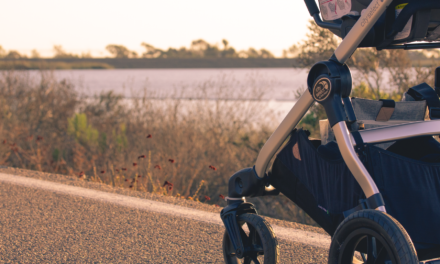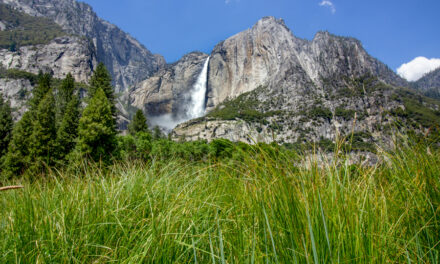Rhabdomyolysis is a serious complication that can occur from overexerting yourself above what your body can handle. After symptoms have subsided, it’s time to think about getting back outside or getting active again. A return to physical activity after being diagnosed with rhabdo needs to be done carefully. Not taking proper precautions can hinder any healing the body has been doing. Taking these steps to ensure getting rhabdomyolysis won’t happen again is an essential part of returning to physical activity after rhabdomyolysis.
Returning to Hiking and Physical Activity After Rhabdomyolysis
So you went on a cool hike, enjoyed some good views, and thought you were doing your body good by getting some exercise. After the hike your typical muscle soreness didn’t go away. There might have even been swelling throughout your body or coke colored urine. The symptoms eventually went away but your strength hasn’t quite returned. In some occurrences you might’ve even found yourself right back in rhabdo after trying to get back to hiking or physical activity. Welcome to rhabdomyolysis recovery – it’s a slow, patient process. Returning to physical activity too soon at too high of a intensity can cause someone to go back into rhabdomyolysis.
Rhabdo Recap
If you’ve found this article by accident, chances are you’re already familiar with rhabdo and perhaps you’re wondering on how to get back to the physical shape you were in before your rhabdomyolysis diagnosis. This is my final post on a series about rhabdomyolysis that I’ve been doing – for those that haven’t heard of this life threatening condition, I recommend the previous articles in the post to skim through to get caught up:
-
What Hikers Need To Know About Rhabdomyolysis
-
How Hikers Can Prevent Rhabdomyolysis
-
What Hikers Need To Know About Rhabdomyolysis Treatment and Complications
To summarize, rhabdo is a complication that can occur from overexerting yourself more than your body can handle. There are variety of causes including lack of nutrition, hot or cold environmental temperatures, exceeding your physical capabilities, dehydration and more. Symptoms of rhabdo often include extreme weakness, swelling, coke colored urine, and others. Severe complications can cause people to end up with kidney failure including dialysis and in rare events, death.
Rhabdomyolysis Recovery
Rhabdomyolysis recovery can vary from person to person but it can be a slow healing process. The frustrating thing about rhabdo is that there is a lot of information out there on how to prevent rhabdo, but no clear cut guidelines on how to recover from the diagnosis. This lack of information can lead to frustration from patients as health care providers may not have the knowledge base or experience to help someone successfully recover back to the physical shape a person was once in.
Returning To Physical Activity After Rhabdomyolysis
After the general symptoms of the diagnosis have worn off, there’s going to be a point at which you’re going to want to return getting back to physical activity or hiking again. There have been some guidelines established on categorizing people into two separate groups. These two different groups label whether or not someone is at a high risk or low risk for getting rhabdo again after returning to physical activity.
High Risk For Rhabdomyolysis Reoccurance:
- When activities have been restricted and it still takes you more than one week to recover from activity.
- Persistent elevation of blood CK levels (greater than five times the upper limit of the normal range), even if you’ve had strict rest from physical activity for longer than two weeks.
- Your rhabdo experience was complicated by any injury to the kidneys.
- You have a previous history or family history of rhabdo (this could mean there’s a possibility of a metabolic cause of your rhabdo).
- Pervious history or family history of recurrent muscle cramps or severe muscle pain that interferes with activities of daily living or sports performance.
- Previous history or family history of malignant hyperthermia or unexplained complications or death after getting general anesthesia for surgery.
- A personal history or family history of sickle cell disease.
- Muscle injuries after low to moderate physical activity.
- Previous history of significant heat stroke.
- Your initial CK values were over 100,000.
Low Risk For Rhabdomyolysis Reoccurance:
- A quick or rapid clinical recovery and return to normal CK levels after a period of restricted exercise.
- A sufficiently fit or well trained athlete prior to a diagnosis with a history of intense training/exercise bouts.
- No previous history or family history of rhabdo, previous reporting of debilitating exercise-induced muscle pain, cramps, or heat illness/stroke.
- If rhabdo diagnosis included other people who underwent the same type of exercise.
- A suspected viral or bacterial infection during the time of diagnosis.
- Taking an illicit drug, pharmaceutical drug, or dietary supplement that might have possibly increased the risk for developing rhabdomyolysis.
Rhabdomyolysis Recovery
Putting yourself into the right category is the first step. However, regardless of which category you fall into, it’s incredibly important to talk with your healthcare provider to get the green light to start being more active. It wasn’t up until the beginning of military style boot camps, high intensity interval training, or programs like Crossfit that rhabdomyolysis became more prevalent. Since the beginning age of social media, the popularity of hiking has also soared exponentially. Hiking is a great thing but with an increase in numbers also comes an increase of accidental medical problems.
Prior to the popularity boom of intense exercise programs and the hiking popularity, exertional rhabdomyolysis was primarily diagnosed to members within the military population. In fact, it was so common that the military came up with a three phase algorithm for returning to physical activity after rhabdomyolysis:
Phase One For Rhabdomyolysis Recovery:
- Rest for 72 hours and encourage oral hydration.
- Sleep 8 hours consecutively every night.
- Avoid excessively hot or cold environments.
- Follow up within 72 hours for a repeat blood and urine test. When the CK level has become less than five times the upper limit of the lab normal range, and the urine has returned to normal, begin phase two. If the labs aren’t normal, follow phase one every 72 hours until normal. If the CK remains five times higher than normal and/or the urine test is abnormal for two weeks, ask to see a specialist.
Phase Two For Rhabdomyolysis Recovery:
- Begin light activity – no strenuous activity!
- Gradually increase the light activity at your own pace for one week. After one week, follow up with a primary care physician within one week to see if activity should be increased further. If there are return of symptoms and everything remains normal, begin phase three. If symptoms return, stay in phase two and follow up with a primary care physician in one week intervals.
Phase Three For Rhabdomyolysis Recover:
- Gradually return to your physical activity. Follow up with a primary care physician as needed especially if symptoms return.
Summing Up Returning To Hiking and Activity After Rhabdomyolysis
Be smart about getting back to your normal activity levels after rhabdomyolysis! Seeing a primary care physician is a must. You need to be assessed to see if it’s safe to return to mild activity. Otherwise, going back to soon could cause you to be right back where you started and lengthen the recovery period. Remember to be patient. Going back to your normal activity levels isn’t something that’s going to be possible right away. Remember, your muscle tissue cells have literally wasted away so you’re going to need to build them back up again. Finally, pay attention to nutrition. Low sodium or potassium levels, lack of carbohydrates, fats, or proteins, and dehydration could put your body right back into rhabdo. Pay attention and to all the things that you can do yourself to prevent rhabdo.
Has anyone here ever experienced rhabdomyolysis and had difficulty recovering? I’d love to hear about your experience. Please share it in the comments below.
Sources:
- Brennan, F., Campbell, W., Deuster, P., Heled, Y., O’Connor, F. “Return To Physical Activity After Exertional Rhabdomyolysis.” Current Sports Medicine Reports. Nov.-Dec. 2008. Web. 11 August 2014
- Atias, D., Druyan, A., Heled, Y. “Recurrent Rhabdomyolysis: Coincidence, Syndrome, or Acquired Myopathy?” Competetive Sports Journal. American College of Sports Medicine. 2013. Web. 11 August 2014.
- Hannah-Shmouni, F., McLeod, K., Sirrs, S. “Recurrent Exercise Induced Rhabdomyolysis.” Canadian Medical Association Journal. 6 March 2012. Web. 11 August 2014.





